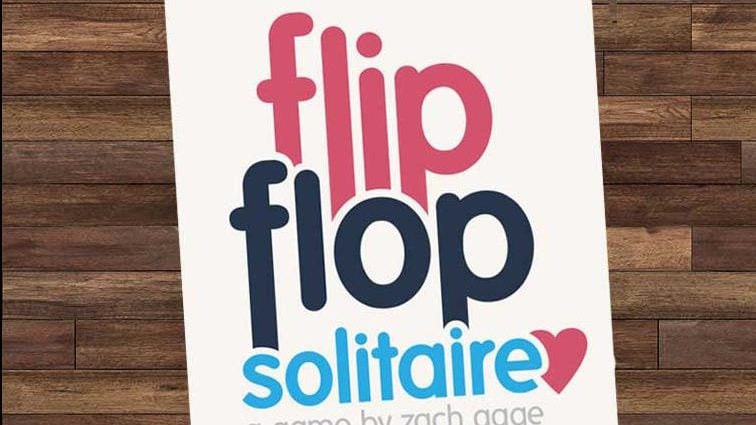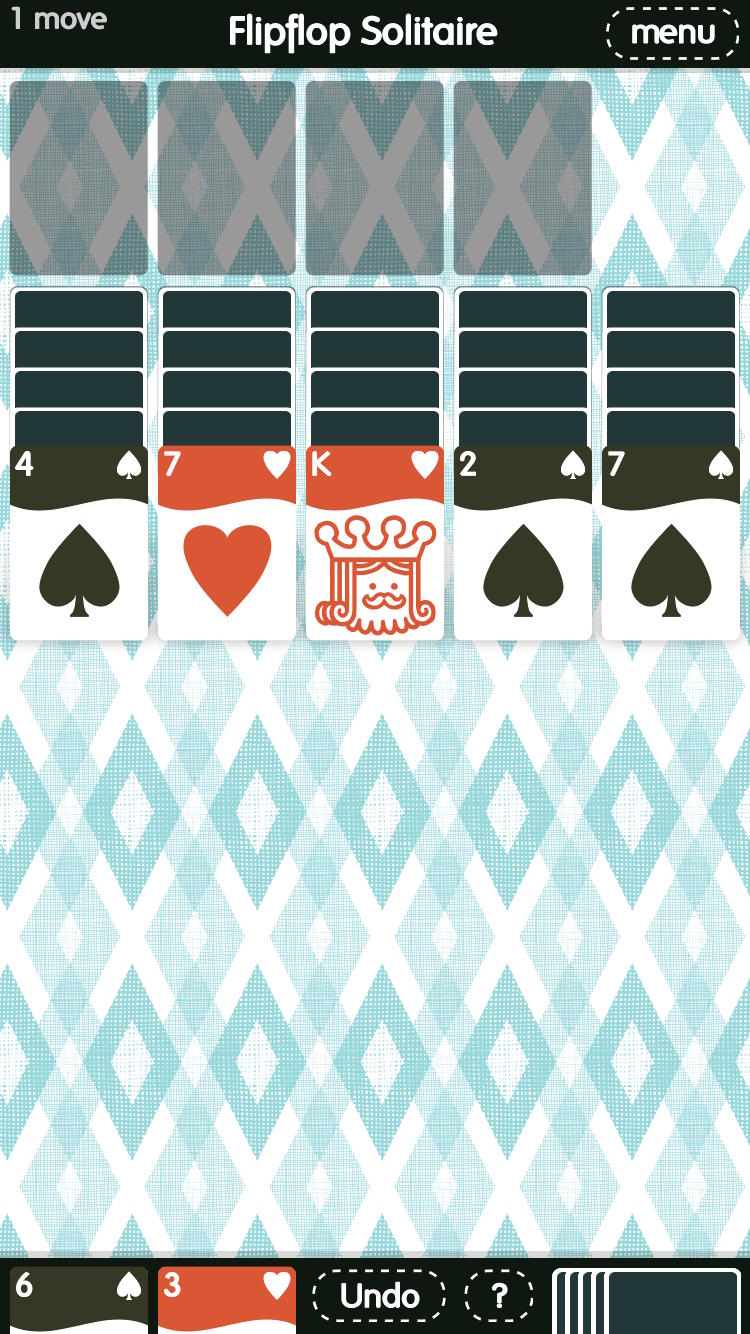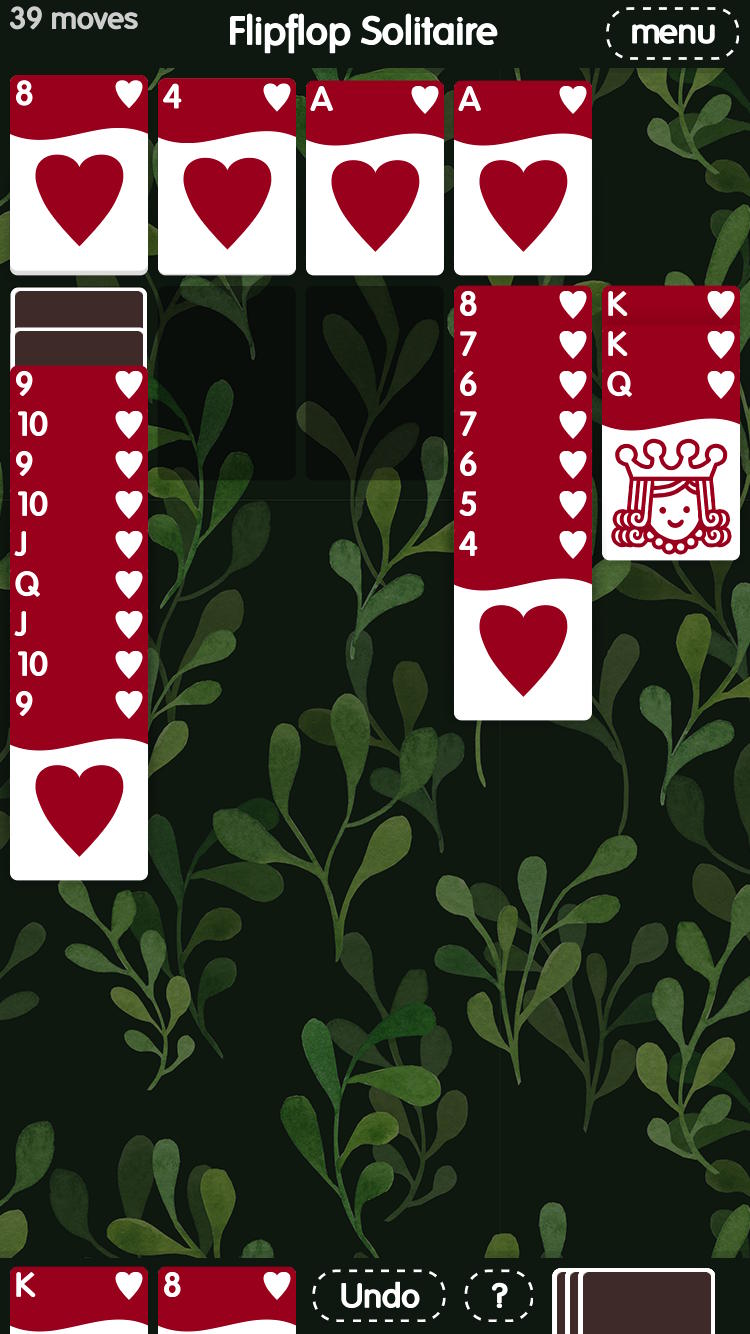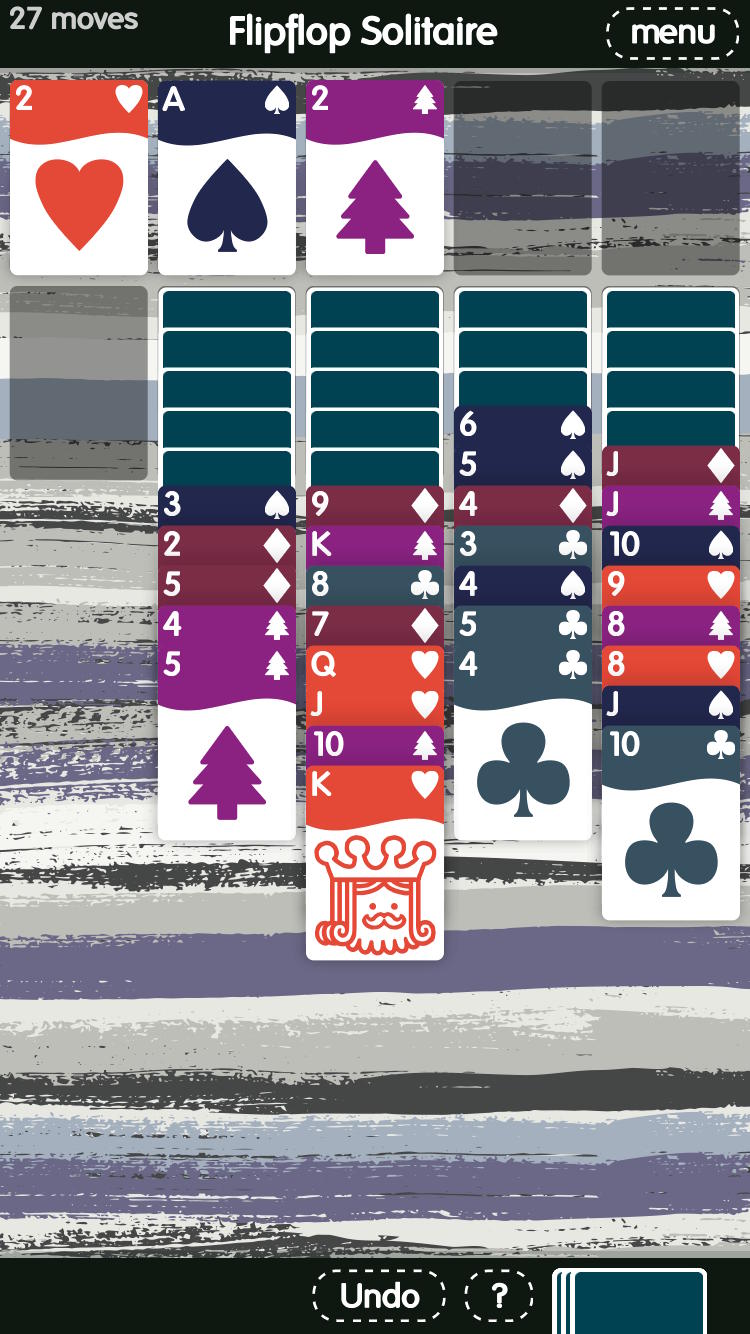- Wondering how to get Monopoly GO! free rolls? Well, you’ve come to the right place. In this guide, we provide you with a bunch of tips and tricks to get some free rolls for the hit new mobile game. We’ll …
Best Roblox Horror Games to Play Right Now – Updated Weekly
By Adele Wilson
Our Best Roblox Horror Games guide features the scariest and most creative experiences to play right now on the platform!The BEST Roblox Games of The Week – Games You Need To Play!
By Sho Roberts
Our feature shares our pick for the Best Roblox Games of the week! With our feature, we guarantee you'll find something new to play!All Grades in Type Soul – Each Race Explained
By Adele Wilson
Our All Grades in Type Soul guide lists every grade in the game for all races, including how to increase your grade quickly!
Flipflop Solitaire Review: A Breath of Fresh Air
Flipflop Solitaire is developer Zach Gage’s second mobile take on the classic card formula, following 2015’s fantastic Sage Solitaire. While Sage Solitaire created its own unique hybrid by combining the single-player deck-sorting of Solitaire with the selective hands and point …

Flipflop Solitaire is developer Zach Gage’s second mobile take on the classic card formula, following 2015’s fantastic Sage Solitaire. While Sage Solitaire created its own unique hybrid by combining the single-player deck-sorting of Solitaire with the selective hands and point values of Poker, Flipflop Solitaire adheres more closely to its inspirations. Its gameplay feels less like an entirely new game and more like an alternative variant on Spider, but that variant adds a playful openness that is simultaneously easier and more challenging and which should appeal to Solitaire newbies and experts alike.
Flipflop Solitaire is something of a mix between classic Spider and Klondike versions of the game: there are five piles of cards dealt to the tableau with most face-down except the bottommost card. A foundation with four (five in some modes) empty spaces sits at the top of the playing area; cards can be moved into these spaces only in order from Ace to King and according to suit, and getting all cards into these slots wins the game. If you run out of movement options within the tableau, a stock pile of draw cards can be used to deal a new, face-up card on the bottom of every pile, while two cards randomly pulled from the deck are available next to the stock and able to be played at any time.

Cards can be moved around the tableau without any regard to suit or color: a Heart can go on top of a Diamond, Spade, or Club equally. But as in standard Spider, only stacks of same-suited cards can be moved together. So you cannot move both a Two of Hearts sitting on a Three of Diamonds—the Two would have to be moved separately and first. Unlike Spider, however, Flipflop Solitaire allows one major adjustment to stacking cards: they can be placed on a pile in descending or ascending order.
This might sound like a minor change on paper, but the effect is significant in execution. Instead of having to work your way strictly down, you can stack in both reverse order as well as a combination of the two. If you have a lot of Sixes and Sevens, you don’t need to have a free slot for every pair: you can just make a long chain of Six-Seven-Six-Seven stacked in a single column. This makes it much easier to move cards around the tableau and rearrange piles. If a King is blocking a card below it, you could move it to an empty space or a Queen. If there’s space on the table, you can even reorder an entire column by moving the cards from bottom-top to top-bottom—since the order doesn’t matter, an entire pile can be stacked in either direction.

While this extra freedom in moving cards allows for more options on any given turn, it can also cause obstructions down the road. Since you aren’t specifically required to place cards in descending order, you can easily trap a lower numbered card underneath an entire stack and be unable to move it to the foundation. With multi-suit game modes this becomes even more dangerous, since you can only move like-suited stacks. More movement options result in more decisions and choices to weigh, with moves you can make not always being the moves you should make.
Thankfully, there is an unlimited undo button and a re-deal option if you find yourself trapped, as well as an available-moves hint and an optional indicator of where stacks break. While your final score will take your use of the undo, time spent, total number of moves, etc. into account, you can also choose to ignore these and focus on simply completing a hand to improve your win-loss ratio. Each game mode—Single Suit; Two, Three, Four, and Five Suit; as well as Ex Single Suit—has its own score and win tally, so if you greatly prefer one mode you can just focus on it.

For Solitaire sages that want even more challenge, Flipflop Solitaire offers a staggering number of achievements to work toward. Some are fairly simple—win one game of Single Suit, for instance—while others require speedy completions, undo-less victories, or even table wins (ordering the cards on the tableau without using the foundation). We found the modes challenging and interesting enough on their own, but the achievements provide an extra sense of accomplishment and additional objectives once you’ve mastered the basic gameplay.
All of this is wrapped in a package that feels specifically designed for mobile players. The switch from Spider’s standard ten piles to only five allows the game to be played comfortably in one-handed portrait mode and keeps the cards large enough to both read and move with ease. Dragging and tap-to-move can be used interchangeably, with the latter acting as a semi-hint system if you’re stuck. Your place is auto-saved upon exit, and you can have one active game on each mode simultaneously.
The game is also simply beautiful to look at: while there’s no shortage of Solitaire options on the App Store, many default to the classic green background and bland cards we’ve seen time and again since Windows 3.0. Flipflop Solitaire is fresh, both visually and thanks to its invigorating gameplay twist that’s given us a new reason to play an old standby.

The good
- The ability to stack cards in either direction adds new opportunities and challenges to a familiar concept.
- Beautiful and straightforward design perfectly suited to one-handed play on mobile.

The bad
- The one rule change doesn't shake things up quite as much as you might expect - this is still primarily Solitaire, for better or worse.
More articles...
Monopoly GO! Free Rolls – Links For Free Dice
By Glen Fox
Wondering how to get Monopoly GO! free rolls? Well, you’ve come to the right place. In this guide, we provide you with a bunch of tips and tricks to get some free rolls for the hit new mobile game. We’ll …Best Roblox Horror Games to Play Right Now – Updated Weekly
By Adele Wilson
Our Best Roblox Horror Games guide features the scariest and most creative experiences to play right now on the platform!The BEST Roblox Games of The Week – Games You Need To Play!
By Sho Roberts
Our feature shares our pick for the Best Roblox Games of the week! With our feature, we guarantee you'll find something new to play!All Grades in Type Soul – Each Race Explained
By Adele Wilson
Our All Grades in Type Soul guide lists every grade in the game for all races, including how to increase your grade quickly!







